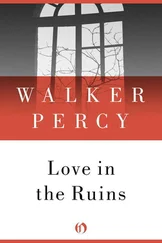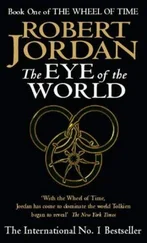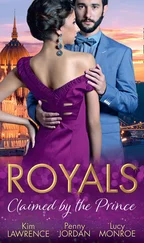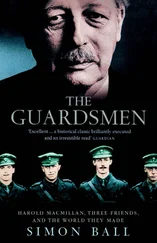Anderson ended his letter to Banks by saying that he would be sending him a sample of the dyestuff he derived from the insects. He feared that the sample he had sent was too damp and that he would take more care in drying the dyestuff in future.[35]
Anderson admitted that this was not going to be easy. He was not certain that what he had been calling cochineal was what Linnaeus had described – looking at it under the microscope, he was inclined to give the insect a new name – and the dyestuff was not so blood-red as he had hoped. Added to that, the cactus that grew in this part of India was much spinier than the one in Mexico: he was not sure he would be able to induce enough insects to live on it?
Banks received the first two of Anderson’s letters sometime in May 1787 and replied to him, agreeing with his main points.[36] The insect was probably not cochineal but another species, so far undescribed in European sources; and it did not give a very good red. It was more like the dye that came from a scale insect species called Polish cochineal, which was now little used. Banks tried out the dye himself and concluded it did not give a good colour, and the results from two professional scarlet dyers, whom he had asked to test it, were so poor that he thought Anderson should abandon the whole project.
However, as Banks put it: ‘Every evil in life has its accompanying benefit.’ Had Anderson not brought the subject of the cochineal to his attention, he admitted, it would never have occurred to him that there was a real opportunity to break the Spanish monopoly on cochineal. India, he argued, had a climate in which the Mexican cochineal could survive, in which spikeless cactus could be cultivated, and an abundant enough labour force to make a success of the project. Banks was certain that the price of Indian cochineal would undercut Spanish sources and, by extension, make Britain if not self-sufficient then at least less dependent on Spain.[37] Anderson would be the perfect person to put the plan into action. ‘If I find the great men at the India House inclined to hear reason on the subject, I shall not fail to propose it to them before the next ships sail,’ Banks wrote.
Before 1785, Banks does not appear to have had any direct contact with the East India Company, despite knowing several of the naturalists associated with it. This changed in April 1785 when Banks received a letter from Thomas Morton, the Secretary to the Court of Directors of the Company, asking him to look over a sample of Chinese hemp that had come his way and to distribute it to those most qualified to judge its properties, in the hope that it might, in future, be grown in Britain.[38] Though nothing much came of this, it did signal that, in the wake of the loss of the American colonies following the War of Independence (1776–83), the East India Company and the government were looking for alternative and more secure sources of raw materials. This entailed the use of naturalists to make proper scientific assessment of the natural resources available.[39]
Banks now found himself being consulted by the Company on several issues and becoming friendly with its leading figures, and those in the government closely involved in its policies: men such as Sir George Yonge, the Secretary for War, Henry Dundas, the chief figure on the government’s Board of Control (which sought to impose restrictions on the Company’s expansionary territorial tendencies); and the Directors of the Company.[40] Banks was consulted, for example, on the plans to begin a Company botanic garden in Calcutta; and on the introduction of tea to India.[41] So when Banks told Anderson that he would share his ideas with the Company, he knew that he would receive a sympathetic hearing.
In 1787 a remarkable book published on the French island of St Domingue (now Haiti) told the story of Thiery de Menonville’s daring journey in 1777 to Oaxaca in central Mexico where he procured a quantity of domesticated cochineals and their nopal habitat, and successfully brought back both the insect and the plant to the island.[42] It was no secret that the local people of Oaxaca and the surrounding area were cultivating cochineal and nopals on a large scale – in the first volume of his major work, A Voyage to the Islands … , 1707, Hans Sloane had a full-size engraving of a Oaxacan nopalry.[43]
Banks had a copy of de Menonville’s book in his library and studied its contents very closely.[44] It wasn’t so much de Menonville’s travel narrative that would have caught his attention but his meticulous description, in the second volume of the book, on how to rear cochineal and cultivate nopal. It was the first published account of the details of cultivation of both insect and plant and, importantly, it was based on first-hand observation rather than hearsay.[45] So taken was Banks by the book that he shared it with Thomas Morton at the East India Company.[46] Anderson also had a copy of it in Madras.[47]
William Petrie, who worked for the East India Company in Madras and who had established the Company’s first observatory there, was in Madras when Anderson began writing to Banks. In a letter to Banks, mostly concerned with the natural history of snakes, Petrie informed Banks that he knew Anderson was working on a cochineal project and added a few words about his character: ‘His application is intense,’ he wrote, ‘Sparing neither fatigue of the Body or Mind, & a perseverance which no difficulties can check. In addition to this, he is a man of great humanity.’[48] Banks had never met Anderson but Petrie’s description of him was certainly borne out by the intensive correspondence reaching Soho Square from Madras. Over a period of thirteen months Banks received more than one long letter per month from Anderson on the subject of cochineal.
However, Petrie’s letter revealed something that Banks found extremely disturbing. Anderson, Petrie remarked, had published the first six letters he had written to Banks in the Madras Courier , the town’s first newspaper, which had only begun publication two years earlier – and the same letters were promptly republished by the Company’s own press – and Anderson had continued sending his letters to the press until fourteen letters were published by early 1788.[49]
Banks was furious. The last thing he wanted was publicity for the project – he’d hoped to keep it secret from the Spanish and the Mexicans in particular. As soon as he learned that the letters had been published, Banks stopped writing to Anderson: ‘I persevered in declining to answer your letters during the time you were printing your Correspondence … from a firm persuasion that no benefit could accrue, either to the company or to you, from that undertaking’, Banks wrote.[50] That was a polite way of putting his displeasure. Anderson, despite Banks’s objection, continued to make public what Banks thought should be kept secret. When, on one occasion, Banks learned that Anderson had printed a set of instructions based on Banks’s advice, he was beside himself with anger.[51] To Thomas Morton at the East India Company in London, with whom he had by now become well acquainted, Banks referred to Anderson’s ‘incredible imprudence’ and to him being ‘actuated by a degree of absurdity wholly above comprehension’.[52]
Banks not only stopped writing to Anderson but, more importantly, stopped working with him on the cochineal project, bypassing him and dealing directly with the East India Company instead. Anderson was not deterred by Banks’s decision and continued to work on his nopalry, which was being supervised by Dr Andrew Berry, his nephew.[53] As Petrie had observed, Anderson was tireless and he did get some yield of cochineal which was shipped back to England.[54] The quantities were modest but the real problem was that the Madras dye was less effective than the one from Oaxaca.[55]
Читать дальше












